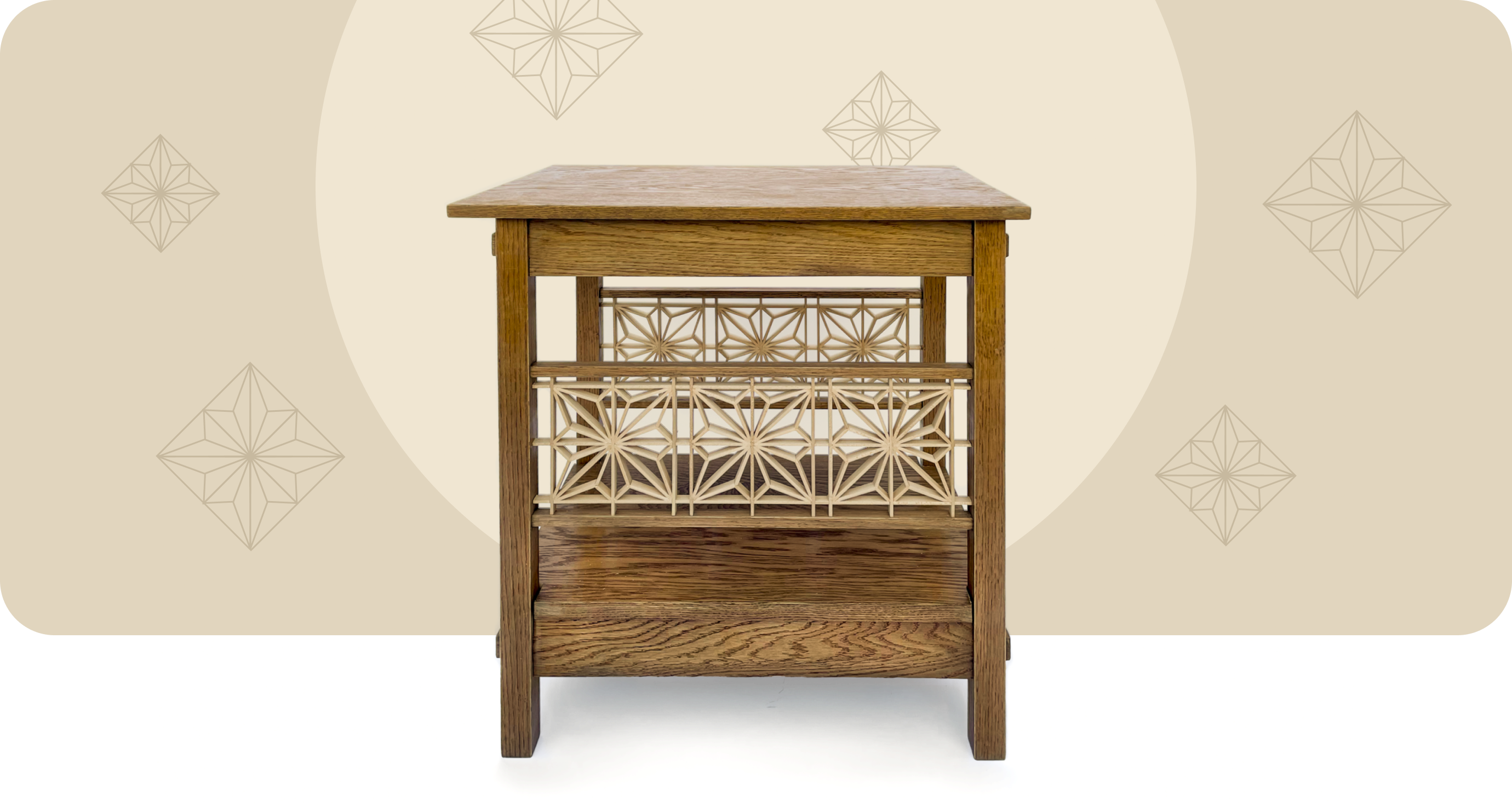East meets west
A balance of form and function.
MY ROLE:
A balance of form and function.
MY ROLE:
The challange

Craftsman Furniture, referred to by many as Mission style, became popular in the late 19th century. It was a child of the Arts and Crafts movement and an example of the emerging desire to move away from mass-produced, industrialized processes. Mission furniture was considered by some to be a reprieve from the previously favored ornate styling of the Victorian era. The fresh, utilitarian simplicity still resonates today.
Japanese Kumiko began in the 8th century, developed during a similar time of change within the culture. However, unlike Mission furniture, Kumiko was primarily used as a decorative addition to otherwise more minimalist woodworking techniques.
The Work
Each joint, surface and details was designed to seamless integrate the two styles

.png)
.png)
.png)
ENd Result

While the two styles were created over a thousand years apart and on opposite sides of the world, their coexistence within a single piece feels natural. Both styles rely heavily on the use of straight lines and the voids between them to define and emphasize form, yet the contrast between them is what helps give the piece depth. The white oak’s quintessential brown stain and finish with dark striations embraces the uniform light-colored and unfinished basswood.
